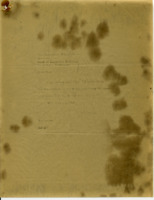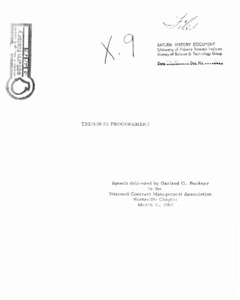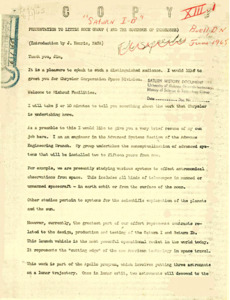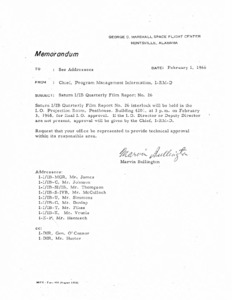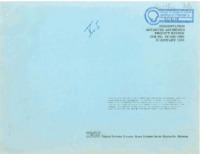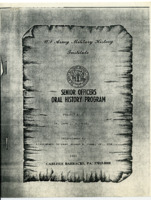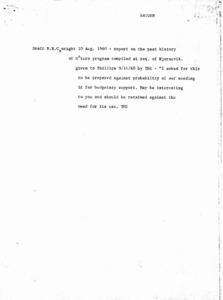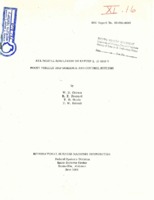
Browse Items (1976 total)
Sort by:
-
Letter to Ray H. Jenkins from Estes Kefauver and enclosed copies of letters.
Kefauver writes to Jenkins stating that he has enclosed the letter from the Department of the Army regarding the Nickerson case. The following letter addressed to Senator Kefauver is from Major General J. H. Michaelis. In it Michaelis writes that after consideration, the disclosure of certain documents is "too minimal to justify directing or advising the convening authority to drop the charges." He also writes that non-judicial punishment would be "legally objectionable" as Nickerson's offense is not minor. The last letter states the same regarding the dropping of the charges. -
"Trends in procurement" by Garland Buckner.
Speech delivered by Garland G. Buckner to the National Contract Management Association, Huntsville Chapter. Discusses the outdated procurement process, how its changing and how to track the trends of how its changing. -
"Saturn IB : presentation to Little Rock Group."
Speech by H.D. Lowrey, SAE Meeting, Detroit, Michigan. Focuses on the Apollo project, the technology involved and what the goals of the project are. -
"Saturn I/IB quarterly film report no. 26."
Memo is from Chief, Program Management Information, I-RM-D.; The date and time of the interlock for the final I.O. approval is given. -
"Development of LOX-Hydrogen Engines for the Saturn Apollo Launch Vehicles."
During the development of the RL-10 and J-2 engines, many problems were encountered. Solutions to the significant problems are contained. A description of these LOX-Hydrogen engines, outlining the unique features of each will be given. Performance parameters for both engine systems are tabulated. Specific applications to various stages are shown. -
Advanced Astrionics project review.
Given at the IRAD Technical Seminar, Gaithersburg, Maryland, January 30, 1968. F. L. Pugh, Principal investigator; E. C. Caldwell, Advanced IU Systems, IBM Huntsville. -
Boeing Magazine, vol. XXXVII, no. 7, July 1967.
The magazine includes the articles "Cut-stone Castles and Opal Fields", "Fast and Loose", "The Barefoot Flyer", "This Is Your Life, Paul Jones", "Boat in a Bottle", "Making the Right Thing Happen", and "The Guard Goes Global". Also included is a briefing of events in the Boeing Company. -
"Senior Officers Oral History Program."
A project of the U.S. Army Military History Institute, this contains the interview of Dr. John L. McDaniel by Lieutenant Colonel Joseph W. Camp, Jr. from 1985. The interview is about the US Army's first satellite into space. McDaniel brings up the case of Colonel Nickerson relative to the interview. This document contains only the portion of the interview that mentions Colonel Nickerson. -
"Saturn: draft."
Report on the history of the Saturn program. -
"All Digital Simulation of Saturn I, IB, and V: Boost Vehicle and Guidance Control Systems."
The introduction notes, "The Saturn V launch vehicle is being developed by the National Aeronautics and Space Administration's George C. Marshall Space Flight Center for Project Apollo; Saturn I and Saturn IB vehicles are providing the early testing and support for Project Apollo. The nerve center of the Saturn is its guidance and control system. An airborne digital computer provides the link which closes both the guidance and control loops,making verification of the flight computer program of vital importance. During a powered flight this onboard digital computer program can be divided into four major parts:a) guidance, including navigation, b) control, c) vehicle sequencing, and d) computer telemetry."
